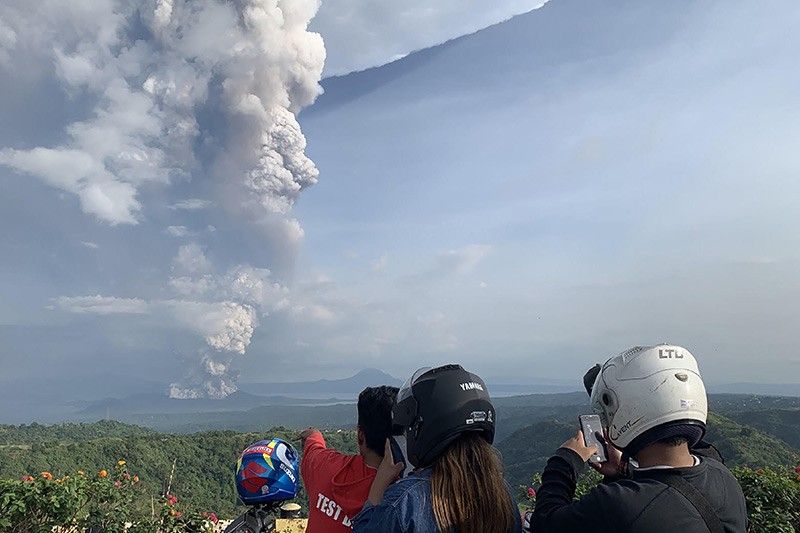Explosive Taal eruption among 'various possibilities' — experts

MANILA, Philippines — The head of the Philippine Institute of Volcanology and Seismology on Monday assured the public that a hazardous eruption from Taal Volcano is a possibility to prepare for and not an impending catastrophe.
On Sunday afternoon, Taal began two spew ash and rocks that piled up to a kilometer high, prompting state volcanology bureau to burn through alert levels 1 through 4, which mean a moderate level of volcanic unrest and the possibility of hazardous eruption is within hours or days, respectively.
READ: Phivolcs raises alert level to 3 as Taal Volcano spews kilometer-high plumes
"It can happen or it may not, depending on the future magma movement and escalation of the volcano's activity," said Philippine Institute of Volcanology and Seismology Director Renato Solidum in a phone call with ANC.
"We cannot say there's one pattern we need to look at, but as long as there's magma movement from below, then there's the potential of having it explosively erupt."
Alert Level 5, which means that a hazardous eruption is ongoing, will be hoisted with an eruption column of up to 15 kilometers high and could bring a base surge, which Phivolcs describes as thick smoke and ash that could travel across the surface of Taal Lake.
WATCH: Taal Volcano spews plumes 100 meters high after phreatic eruptio
Phivolcs said a volcanic tsunami is possible in case of an eruption. They added, though, that the alert level may also be downgraded if activity becomes "less intense."
Solidum pointed out that the initial ashfall was not yet explosive.
"What we have been observing since [Sunday] are just productions of eruption columns. Ashes with steam and has and sometimes rocks vertically exploded out of the main crater of the volcano," Solidum added.
"It's possible the incoming magma may not be explosive [and] it will just emit lava out of the crater."
Evacuation underway
The Phivolcs warnings have prompted the mass evacuation of some 300,000 citizens in the area, according to a bulletin from the National Disaster Risk Reduction and Management Council (NDRRMC), which has now activated its red alert, meaning that all disaster officials in the region are required to report to their headquarters 24/7.
As of the NDRRMC's 6 a.m. update, a total of 966 families—7,742 people—were forced to take shelter in some 38 evacuation centers.
Dr. Carlo Arcilla, a geologist at the National Institute of Geological Sciences, also told ANC that the lava flow in Taal could also mean a weaker eruption.
"If it's a lot of lava, in my opinion, the extent or damage will be limited. It will not be a type of eruption carrying a lot of pyroclastic materials," he said.
Pyroclastic materials can include clouds of ash as well as lava fragments in the air and vapor.
Solidum warned though that a vertical eruption was not the worst case scenario.
"Essentially, it's not only the vertical column that can be produced but also somewhat a horizontally-moving cloud from the base of the eruption column towards the mainland. And that is the most dangerous," he said.
"There are various possibilities."
READ: Walang Pasok: Canceled classes for January 13, 2020 due to Taal Volcano's unrest
- Latest
- Trending






























